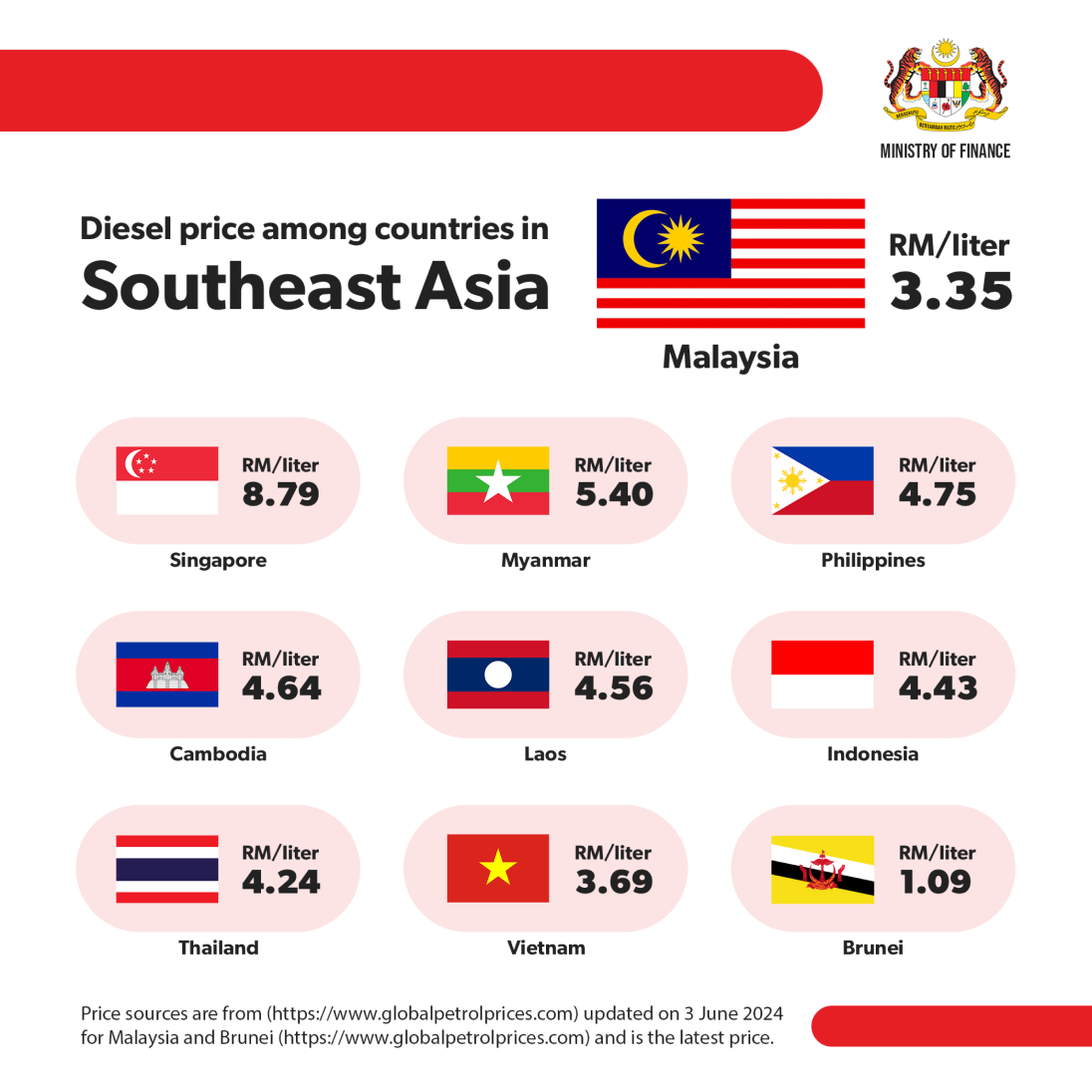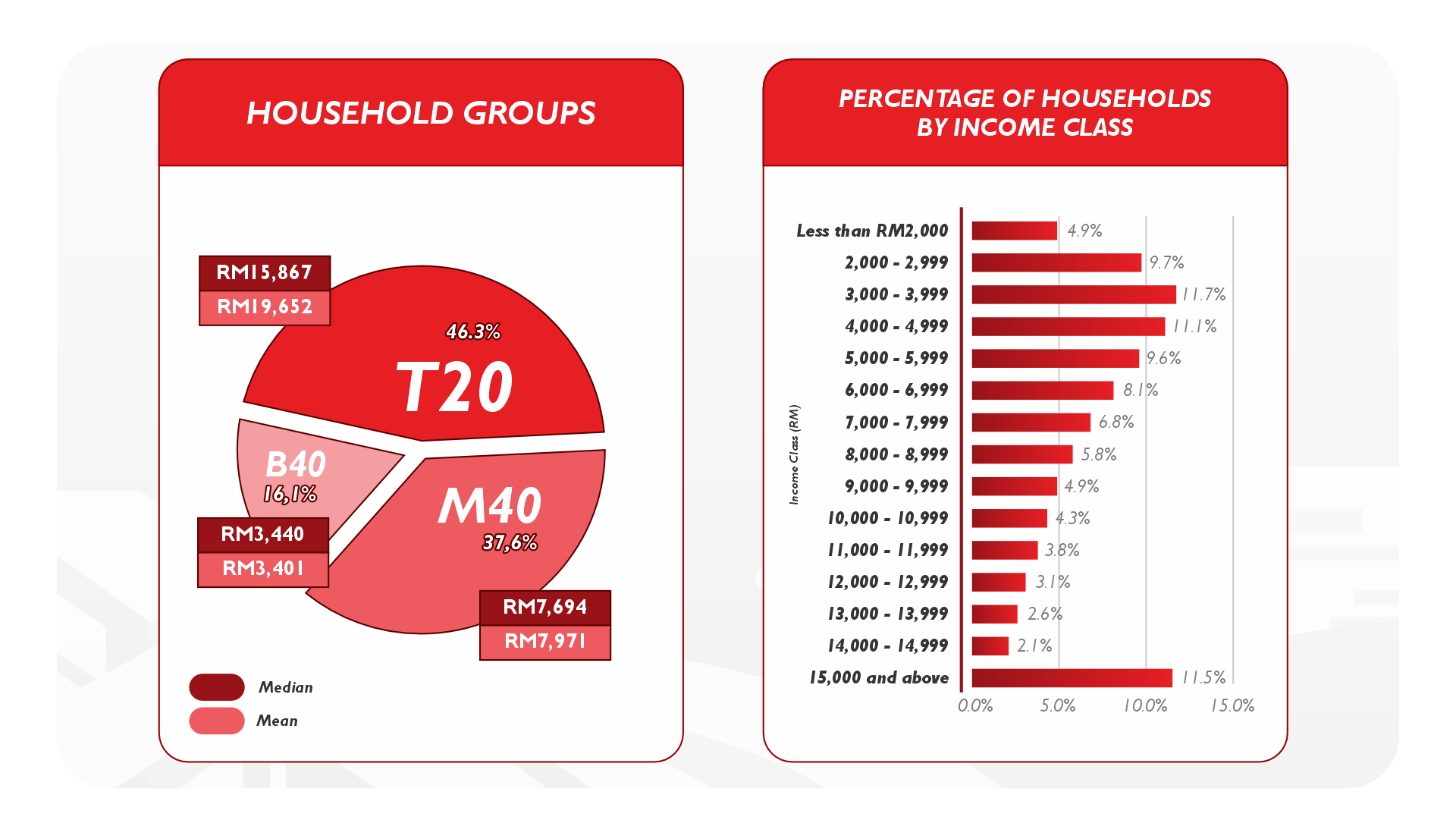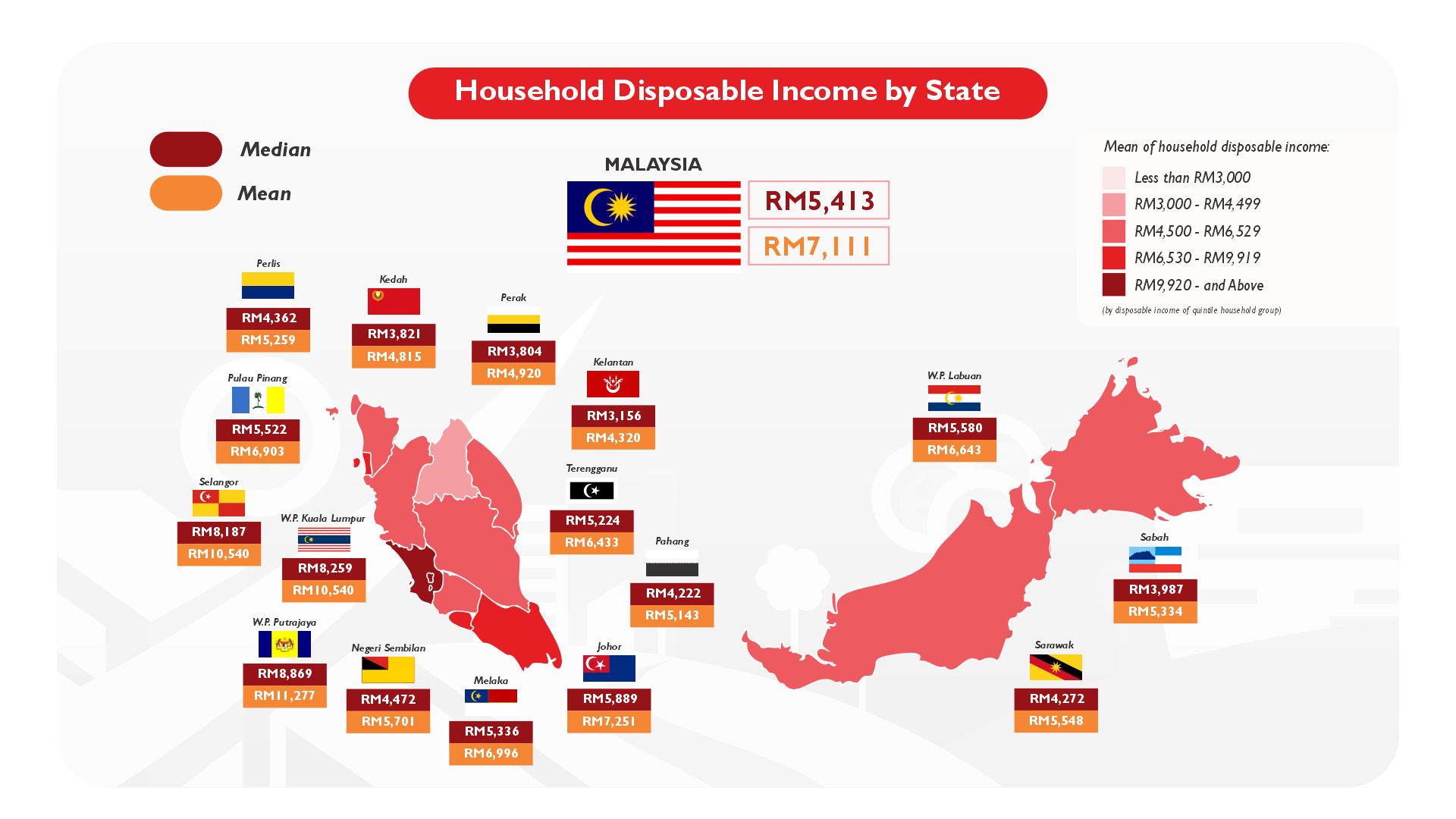
The removal of the diesel subsidy marked a significant shift in policy aimed at reducing the financial burden on the national budget and encouraging more efficient fuel use. This move has spurred discussions about the potential elimination of petrol subsidies, particularly for RON95, and its likely effects on the Malaysian economy and society. The diesel subsidy removal offers a glimpse into the possible challenges and impacts of phasing out petrol subsidies.
The History and Burden of Petrol Subsidies
The petrol subsidy in Malaysia has been a significant component of the nation’s economic policy for decades. Introduced in the 1980s during the tenure of the former Prime Minister Dr Mahathir Mohamad, the Automatic Price Mechanism (APM) aimed to alleviate the cost of living for Malaysians by keeping fuel prices affordable. Under the APM, the government would subsidise the price differential if the market price was more significant than the retail price.
This policy was crucial during high global oil prices, ensuring that transportation and essential goods remained accessible to the general populace. Over the years, the subsidy has played a pivotal role in shaping Malaysia’s economic landscape. However, it has also sparked considerable debate regarding its long-term sustainability and financial impact.
The financial burden of subsidies became particularly evident in 2008. Spending on subsidies peaked at 22% of revenue from total oil exports, exceeding even spending on essential supplies and services. This coincided with the global financial crisis and a spike in oil prices, leading to a significant deterioration in Malaysia’s fiscal health. 2009, the economy contracted by 1.5%, and the fiscal deficit reached its highest level since 1982. This was partly due to the release of two stimulus packages worth RM67 billion aimed at mitigating the crisis but also a consequence of the rising subsidy costs.
Beyond the financial strain, the subsidy program also faced criticism for creating economic distortions, such as overconsumption and waste of subsidized fuel. Additionally, leakages due to smuggling resulted in unintended beneficiaries, with untargeted subsidies often disproportionately benefiting industries and higher-income households rather than the intended low-income groups. The fuel subsidy, which was primarily created to help the poor, has ironically benefited the wealthy population more. The poorest 20% of the population receive only 7% of the subsidy’s benefit, while the wealthiest 20% receive a disproportionate 43%. This misallocation of resources underscores the need for a more equitable and efficient system that truly supports those in need while minimising economic inefficiencies.
This inefficiency highlights that for every RM1 billion spent on subsidies, resources could have been better allocated to essential infrastructure like hospitals, schools, or roads. The rationale behind removing the subsidies is to address these issues by reducing inefficiencies and reallocating funds more effectively. By shifting from blanket subsidies to targeted assistance, the government aims to improve fiscal sustainability and direct resources towards critical areas such as infrastructure, public transportation, and social programs, ultimately fostering a more sustainable economic environment. For example, a targeted subsidy transfer of RM150 a month to the B40 group would cost the government around RM5.7 billion a year. This is much lower than the RM45 billion spent on blanket RON95 fuel subsidies.
While removing petrol subsidies poses a significant financial burden, it offers a notable long-term benefit. Redirecting the substantial resources spent on fuel subsidies can significantly enhance critical areas such as public transportation infrastructure, social programs, and healthcare investments. For instance, every RM1 billion saved from subsidies could fund the construction of 5 hospitals, 20 schools, or 50 km of roads. Higher petrol prices encourage Malaysians to reduce their reliance on personal vehicles, opting instead for carpooling, public transport, or alternative modes of transportation. This shift will alleviate traffic congestion, reduce emissions, and contribute to a more sustainable future.
However, removing fuel subsidies has sparked considerable concerns among Malaysians, who feel frustrated about bearing the brunt of higher fuel costs and the potential for increased prices of everyday goods. The government’s challenge is to convincingly demonstrate that these short-term hardships are essential for ensuring long-term economic stability and growth. For example, by redirecting funds previously allocated to subsidies, the government can invest in expanding and improving public transportation systems, making them more reliable and accessible.
Anticipating the Impact of RON95 Subsidy Removal
The removal of the RON95 petrol subsidy is set to have a significant impact on Malaysian consumers, with profound implications for the cost of living and economic stability. Unlike the diesel subsidy, which primarily affects businesses, eliminating the RON95 petrol subsidy will directly impact consumers, particularly those from lower-income groups.

The B40 demographic, representing the bottom 40% of income earners in Malaysia, relies heavily on personal vehicles for commuting and daily activities. With the removal of the RON95 subsidy, these households will likely face a sharp increase in fuel expenses, exacerbating their financial burden. As petrol prices rise, so will the cost of transportation, leading to higher prices for essential goods and services. This domino effect can strain household budgets, making it more difficult for families to afford necessities.

Removing fuel subsidies seems like a straightforward economic move, but it could disproportionately impact Malaysia’s B40 demographic. Their reliance on vehicles for transportation makes them especially vulnerable to rising fuel costs, potentially leading to a domino effect on everyday goods. Dr. Shankaran Nambiar, a senior research fellow from The Malaysian Institute of Economic Research (MIER), suggests targeted assistance programs to mitigate the burden on low-income Malaysians. However, he also highlights the complexities involved. Even with targeted subsidies, the cost of transporting essential goods like groceries is likely to increase. He emphasises the difficulty of ensuring only the B40 benefit and managing the public perception of a higher cost of living, even with potential cash handouts.
Government Measures to Mitigate Impact
The government has implemented several measures to mitigate the impact on consumers following the removal of diesel subsidies. Prime Minister Datuk Seri Anwar Ibrahim announced that subsidies would still cover around RM7 billion, focusing on targeted assistance to ensure the subsidies reach the appropriate groups. Subsidies and assistance will continue for bus and taxi operators, fishermen, smallholders, farmers, and traders in the B40 and M40 income groups who use diesel for their businesses or farming activities. These measures aim to protect lower-income groups and essential service providers while saving the government an estimated RM4 billion annually.
He added that under the targeted diesel subsidy implementation, the government has set diesel fuel prices for eligible sectors as follows:
- Subsidised Diesel Control System (SKDS) 2.0, which provides fleet cards to eligible logistics vehicles to mitigate the impact of the diesel price on consumer goods prices, is set at RM2.15 per litre.
- Subsidised Diesel Control System (SKDS) 1.0 for land public transport, including school buses, express buses, ambulances and fire engines remains at RM1.88 per litre.
- Subsidised diesel for fishermen is maintained at RM1.65 per litre
Coping Strategies
As fuel costs rise, Malaysians could adopt several strategies to manage and mitigate the impact on their budgets. A key component of these strategies involves the adoption of electric vehicles (EVs), supported by various government initiatives.
Adoption of Electric Vehicles (EVs)
The Malaysian government has implemented several measures to encourage the adoption of EVs:
- Tax Exemptions: Exemptions on import and excise duties for EVs have been introduced, making these vehicles more affordable for consumers. This financial support significantly reduces the overall cost of purchasing an EV.
- Charging Equipment Scheme: The scheme includes the purchase, installation, or rental of EV charging equipment for personal use, up to RM2,500, extended until 2027.
- Cost Efficiency: According to Tenaga Nasional Berhad (TNB), the fuel cost for EVs is estimated to be 11.4% – 51% lower than for internal combustion engine (ICE) cars. This substantial saving on fuel costs makes EVs an economically viable option as petrol prices continue to rise.
In addition to EV cars, the government is promoting the use of electric motorcycles through the Skim Galakan Penggunaan Motosikal Elektrik:
- Income-Based Incentives: This scheme applies to Malaysians with annual incomes of RM120,000 or less.
- Direct Rebates: It offers direct rebates on electric motorcycles up to RM2,400, making them more accessible and affordable for a broader population segment
Despite having electric vehicles as an option, Malaysians may still need to adopt various measures to save money and adapt to the potential rise in fuel costs and the removal of fuel subsidies.
- Shifting Travel Habits: Public transportation or carpooling can significantly reduce reliance on personal vehicles.
- Fuel Efficiency: Regular car maintenance, practicing fuel-efficient driving techniques, and considering more diminutive, more economical vehicles can help stretch a tank of gas further.
- Planning and Budgeting: Consolidating errands and planning trips efficiently can minimise unnecessary driving. Reviewing budgets and adjusting spending habits may be necessary to account for increased transportation costs.
Reassessing Fuel Subsidies in Malaysia
Fuel subsidies in Malaysia have long been essential for stabilising the economy and protecting consumers from fluctuating global oil prices. However, the long-term sustainability of these subsidies is increasingly in question. As the government considers phasing out petrol subsidies, it is crucial to evaluate the potential economic, social, and environmental impacts comprehensively. While the immediate effects may pose challenges, the move presents an opportunity for Malaysia to enhance market efficiency, promote sustainability, and achieve more equitable economic growth.
Removing fuel subsidies in Malaysia represents a pivotal shift toward a more sustainable and efficient economic framework. While this policy change is a crucial element of a broader reform strategy, it underscores the need for a nuanced approach that balances economic efficiency with social responsibility. The government must address the financial strain on affected sectors through well-designed support measures. Despite the introduction of targeted assistance and fleet cards, challenges persist, particularly for small and micro-businesses grappling with increased fuel costs. It is vital to continuously evaluate and adapt support mechanisms to ensure that the transition benefits the entire economy without disproportionately burdening vulnerable groups. This balanced approach will enhance economic stability and promote a fair and inclusive transition to a more sustainable future.

